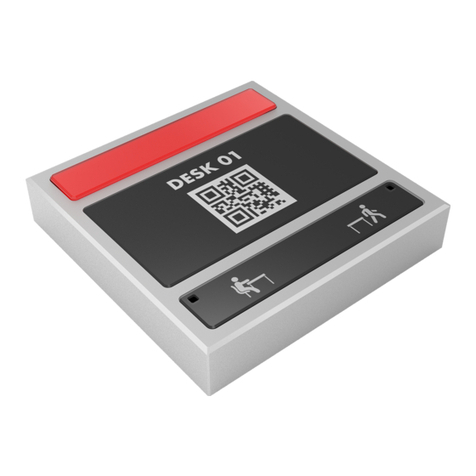
Try to hit the cue ball to the middle of the far rail so it returns back over the spot. Take a couple slow, smooth practice strokes and
pause briefly with your tip near the cue ball before your final stroke. During your strokes your mobile device will beep when QMD3
detects that the stroke is off-line. When you hit the cue ball on your final stroke your mobile device will chirp to indicate that QMD3
has detected and recorded the shot.
Notice that the ‘stroke off-line’ beeps differ if you’re off to the right or off to the left.
With smooth, straight strokes and a light grip you will eliminate the off-line beeps. Pay attention to the points of your practice
strokes where you hear a beep and adjust your stroke to stop them.
With a smooth stroke pausing at the cue ball, transitioning smoothly from backstroke to forward stroke and finishing through the
cue ball your shot will be detected and recorded with a chirp.
In short, strive to minimize the beeps and be rewarded with a chirp at the finish of each shot. This is how the instant feedback
QMD3 provides helps you develop and refine a smooth, straight, properly tempoed stroke.
(Note: you can avoid extraneous beeping when moving about the table by tilting your cue stick upward, QMD3 will only beep when
in a shooting position from about level to about a 45 degree downward tilt).
The last shot you’ve successfully recorded during your practice (the chirp) will be immediately displayed on the Practice screen. This
screen also allows you to see in detail all the recorded shots of your practice session. The animation allows you to see where your
stroke may be deviating off line. For a closer look you can even review your shot frame-by-frame using the animation control
buttons ( <,>,||)and from different views (Top, Side and Back). Double tap the Practice screen to change the view.
Now, with the Practice screen open, take another practice shot. Notice that each new shot is instantly displayed and available for
your review. Then swipe the screen sideways (left or right) to display the previous or next recorded shot. Look for any tendencies –
are you often pulling off-line to the left in your backstroke, veering right on your forward stroke, and so on? The Practice screen will
help you pinpoint areas to work on to smooth out and straighten your stroke.
Try another drill. Line up a number of ball across the middle of the table. Place the cue ball on the second diamond lined up for a
straight-in shot to a corner pocket. Pocket the ball with a stop shot. Repeat with the remaining balls.




























